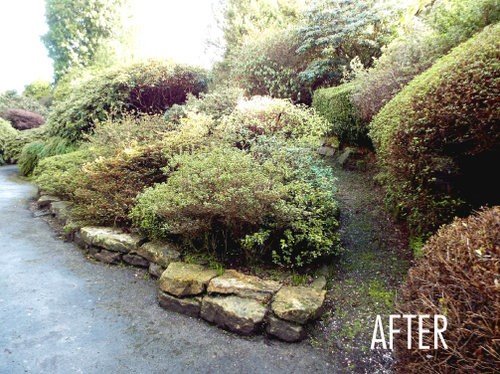RESTORING THE GARDENS: A LABOUR OF LOVE
Why do the ‘finest woodland gardens’ in England need restoring anyway?
Many people are surprised that the 200 acre estate needs any restoration work. Don’t woodlands and lakes look after themselves?
No they don’t: not if the public are to have safe and convenient access; if you are to protect endangered wildlife; and comply with all the rules and regulations for Grade I Listed gardens.
There has been little or no maintenance work for some seven years since the estate closed to the public. In that time pathways have become overgrown; many are almost impassable. Some paths down the steep sides of the valley have deteriorated and fallen away, or present a risk to all but a sure-footed mountain goat. The lakes have become clogged with weeds and algae.
So there is a lot of cutting and clearing, path laying and work on the seven man-made lakes. We have a team of some 13 dedicated gardeners. They are out in all kinds of weather - and it has been a particularly wet kind this winter. This does not stop us, but it can make the process of accessing areas difficult to say the least. Trying to get vehicle access down steep, slippery slopes in order to move loads can double the time taken for a simple task.
Then there are all the additional jobs resulting from working with such a precious habitat in the 21st century. There are colonies of protected fauna - bats and newts - which cannot be disturbed at certain times of the year.
Also, we have to catalogue the collection of nearly 10,000 trees and shrubs and trace their history. This is because much of the flora is rare, and in some instances possibly unique, the only UK specimens. The Loder family were terrific collectors of rare and exotic trees and shrubs when they acquired the estate in the early 1800s: we are continually reminded that these really are the finest woodland gardens, perhaps anywhere.
Many of the trees are ‘national champions’ - some 22 we estimate. They are amongst the most mature and largest specimens of their kind. One such is the critically endangered Abies Nebrodensis (Sicilian Fir); we are sharing seedlings with Kew Gardens to preserve the species, as only 30 are left in the wild.
All in all, this is one of the biggest garden restoration endeavours since the Heligan project in the 1990s (every horticulturist will know about this!).
When you see the finished work, you will be convinced it was worth it: to see the amazing collection of Rhododendron, Camellias, Azaleas, with their riot of colour later in the year. And the outstanding example of our Pulham-made Rock Garden. The beautiful lakeside settings, the kites, the deer and the wallabies.
We look forward to seeing you. Please visit this page again and we’ll keep you updated on news. There will be some, necessarily limited access to the estate before the main July opening. Thanks!





